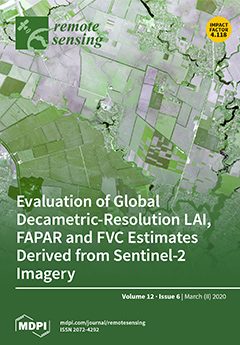The air quality in China has experienced dramatic changes during the last few decades. To improve understanding of distribution, variations, and main influence factors of air pollution in central China, long-term multiple satellite observations from moderate resolution imaging spectroradiometer (MODIS) and ozone monitoring instrument (OMI) are used to characterize particle pollution and their primary gaseous precursors, sulfur dioxide (SO
2), and nitrogen dioxide (NO
2) in Hubei province during 2005–2017. Unlike other regions in eastern China, particle and gaseous pollutants exhibit distinct spatial and temporal patterns in central China due to differences in emission sources and control measures. OMI SO
2 of the whole Hubei region reached the highest value of ~0.2 Dobson unit (DU) in 2007 and then declined by more than 90% to near background levels. By contrast, OMI NO
2 grew from ~3.2 to 5.9 × 10
15 molecules cm
−2 during 2005–2011 and deceased to ~3.9 × 10
15 molecules cm
−2 in 2017. Unlike the steadily declining SO
2, variations of OMI NO
2 flattened out in 2016 and increased ~0.5 × 10
15 molecules cm
−2 during 2017. As result, MODIS AOD at 550 nm increased from 0.55 to the peak value of 0.7 during 2005–2011 and then decreased continuously to 0.38 by 2017. MODIS AOD and OMI SO
2 has a high correlation (R > 0.8), indicating that annual variations of SO
2 can explain most changes of AOD. The air pollution in central China has notable seasonal variations, which is heaviest in winter and light in summer. While air quality in eastern Hubei is dominated by gaseous pollution such as O
3 and NO
x, particle pollutants are mainly concentrated in central Hubei. The high consistency with ground measurements demonstrates that satellite observation can well capture variations of air pollution in regional scales. The increasing ozone (O
3) and NO
2 since 2016 suggests that more control measures should be made to reduce O
3-related emissions. To improve the air quality in regional scale, it is necessary to monitor the dynamic emission sources with satellite observations at a finer resolution.
Full article





